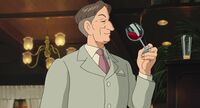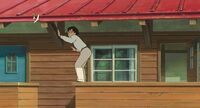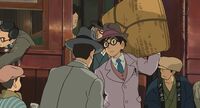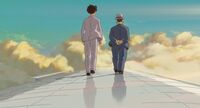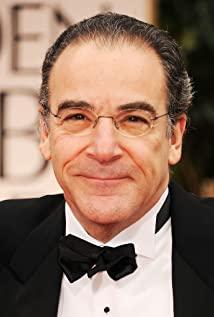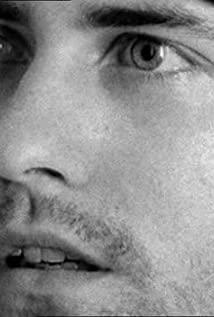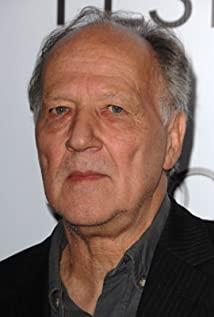Question: I heard that you wanted to buy the real body of a zero fighter in the United States in the past.
Miyazaki: An airplane is the most beautiful only when it is flying in the air. At that time, I especially wanted to see the Zero War flight, and wanted to see the Japanese flying it, not the Americans. I also dreamed that it was flying under a high-voltage line that ran above Studio Ghibli. But in the end, the idea came to an end when his wife's sentence "a fool has to have a score" gave him a heads-up.
Question: What is the charm of Zero War that fascinates you so much?
Hayao Miyazaki: Including myself, the young people who grew up in Japan at a certain period of time have very complicated feelings about previous wars. The symbol of this complex is zero war. Japan launched a war because of its stupid arrogance, which brought disaster to the entire East Asian region and turned these regions into scorched earth. In actual combat, there is only a disgraceful history of low combat capability, such as the naval battle on Midway. And in such a shameful history, only zero wars can be called "not lost." At the beginning of the war, there were as many as 322 zero wars and all zero war pilots in previous battles had terrifying power.
What makes Zero Fight a first-class aircraft is the extraordinary inspiration of its designer Jiro Horikoshi. At the same time as Zero War, there was another fighter named "Falcon" by other designers. The two are similar in size, the engine is also the same, and the completely lightweight design concept is the same. In terms of weapons and equipment, Zero War is even heavier. However, when the two planes started flying side by side, the speed of Zero Combat was faster and farther. It's incredible. Horikoshi Jiro has mastered the mystery of aerodynamics that is difficult to describe in words.
Those fanatics who talk about zero war all day are mostly people who have stubborn complexities and are extremely vanity. I don't want to see the extremely talented results created by a genius like Horikoshi Jiro, who transcends thinking and technical ability, to become a vent for patriotism and national complexes. I want to use this movie to take Horikoshi Jiro back from this category of people.
Question: On the one hand, you criticize war, and on the other hand, you have a soft spot for weapons like Zero War. Isn't it contradictory inside?
Miyazaki: Very contradictory. My hobby of weapons is more of a kind of innocence. Once, in a university finance class, as a digression, the professor gushed about how the war economy had severely damaged the national economy. His words dealt a great blow to me. Suddenly, I felt that the books and models about weapons that I had collected were useless. After I went back, I was cruel and threw them away.
Even so, after many years, every time I come across this kind of book, I can't help but buy it. And my opinion has completely changed. What happens when you fight against a country with a higher level of industry and richer resources. Just compare how many planes Japan, Britain and the United States have built during the war, and it's clear.
Zero War was also involved in the war of attrition after the middle of the war, and witnessed many outstanding pilots dying in the sky. After that, it was defeated all the way. The body structure also stopped mass production. An aviation historian in Europe once wrote: "It is unbelievable that more than 10,000 airplanes were manufactured for such a complicated airplane."
Q: There is a scene in the movie that describes an airplane standing like a mountain after the defeat. The solitary figure of Jiro Horikoshi in front of the wreckage. What are your thoughts?
Miyazaki: I think he became fragmented then. He devoted himself to the dream of building a beautiful aircraft, from designing the Type 96 shipboard fighter that appeared in the movie to designing the zero war that followed, reaching the peak of his career. However, in the face of the shortage of technical personnel in the war, they have to be very busy in the development of new models and the improvement of zero war. Just like Ghibli’s order “to produce five new animations a year, but the staff must maintain the status quo”. He worked desperately, but the result was not as expected. But he still has the arrogance of "I didn't fail". He clearly wrote: "Many people say that I am also responsible for the war, but I don't think I am responsible."
Question: Sone Yoshino, a technician who assisted Jiro Horikoshi, saw that Zero War was used in the special attack team and came up with this thought: "It's too tragic. I knew so many people would die because of it. How good would it not be to make it? How good is it not to design it." Is there any difference between Horikoshi Jiro's ideas and his?
Miyazaki: Maybe he also felt this, but at the same time, he was more likely to think: "This is not related to me." Of course, as a member of the Japanese nationals, Jiro Horikoshi did bear the responsibility of the war. But a technician does not need to shoulder the responsibility of the entire history. I think it's worthless
to blame him for the responsibility. I can understand Sone's feeling of "how good it should be not to make it", but if you don't make it, wouldn't life become more boring? It is also said in the movie that airplanes are "beautiful but hated dreams". Make what you want to make, then be hated, and then injured. However, Sone would definitely think that "this is also a last resort." Like the protagonist, it is a better choice to live hard in the tide of the times. Because in the grip of the times, no one can pretend that this is good and that is bad.
Question: I heard that my father once ran a munitions factory and manufactured zero-war parts. Moreover, after experiencing earthquakes and air strikes, he began to believe in nihilism.
Hayao Miyazaki: Speaking of nihilism, it will give people a calm sideways and an impression of no taste. My father is not like that. He just thinks that "family is the most important." After experiencing the general tragic experience of the collapse of the world, he gave up the rhetoric such as "Such values are very important" or "If people don't do this", he began to think that he should protect his family and friends within his ability. There is no need to be responsible to the country and society as a whole. His mantra is "Don't do damage."
Q: Do you think so now?
Miyazaki: The only difference is whether the radius is 30 meters or 100 meters. This range is the limit of one's own abilities. This is enough, and I can only think so. In the past, there was an idea that something must be done for the whole world or all mankind. But now it has changed a lot. I can't say that I have no interest in the socialist movement, but it was more casual at that time. I still remember the first time I saw Mao Zedong's photo, I thought it was such an annoying face. But the people around him said he was an "extremely gentle person", so I tried to think, maybe that photo was not well taken. In fact, it’s good to believe in the first impression. In addition, there are many mistakes in judgment. I am a person who makes mistakes a lot.
Question: The stage of the movie was chosen from the late Taisho period to the early Showa period. At that time, the Great Kanto Earthquake occurred, the world fell into panic, and international relations became increasingly tense.
Miyazaki: It is very similar to the current era. It's just that people at that time couldn't expect health and longevity. In the past, Tokyo was the place with the most tuberculosis patients in the world. Young people keep dying. Because there is no guarantee in the future, they think that when they can live, they must do their best to live.
From last year to this year, several of my 40-something and 50-something friends who worked with me have passed away. Death does not wait in line, sometimes it really feels like it is behind you. As far as I am concerned, if I become negative mentally, death will look terrifying. If I can continue to create, the situation will be much better.
Q: Although you said that you are "only responsible for what you can do with your surroundings", you still influence many people through the movie.
Hayao Miyazaki: For me, creating a movie is not to build a cultural career, but a job. It’s just that it sells very well sometimes. If the audience does not buy it, the studio will close down instantly. Those who have recently joined Studio Ghibli always have the illusion that this is a stable company, which is simply inexplicable.
Question: In the animation industry, the outsourcing of business to overseas countries with low labor costs is also increasing, resulting in an increase in the hollowing out of content. And Ghibli still recruits many official members in the country. why is that?
Miyazaki: To create meticulous works. The opportunity for the staffing of the company was the production of "Kiki's Delivery Service" more than 20 years ago. At that time, the practice of the studio was to sign a contract with the animator once there was a work, and pay the author's remuneration based on the output of the painting. However, once the accuracy of the screen is improved, the speed of painting will decrease correspondingly, and the remuneration of animators will also decrease and become poor. The piece-rate system consumes laborers to a large extent. After being staffed, you must continue to create new works for the management of the company, and efficiency will also decrease. Although I understand that this will be very hard, but in order to continue to create a good movie, it can only be so.
When making this movie, the employees who entered the studio three years ago provided strong combat capabilities. They are rigorous and diligent when drawing scenes of crowds that are so complex that people have the urge to cry. We were surprised to see the results.
In Japan, in addition to Ghibli, an animation company with a certain number of full-time employees is probably the only "khara" run by Director Anno Hideaki of "Evangelion". I have been in contact with him for more than 30 years. He did his best for the creation of the works, and also devoted himself to the training of newcomers, and suffered a lot of charity. I invited him to serve as the voice of Jiro Horikoshi. Anno is doing his best to live in this era. In my opinion, he is the one who resembles Jiro Horikoshi in contemporary society.
Excerpted from "
Movie World" originally published in "The Asahi Shimbun "
View more about The Wind Rises reviews



